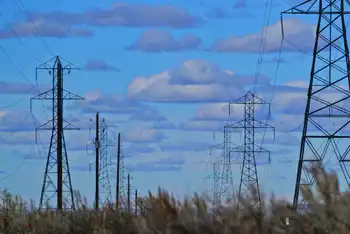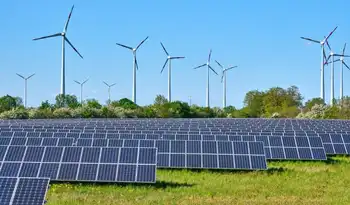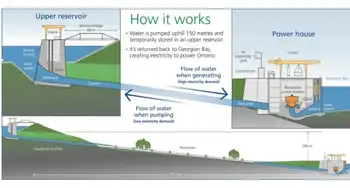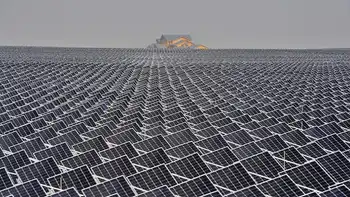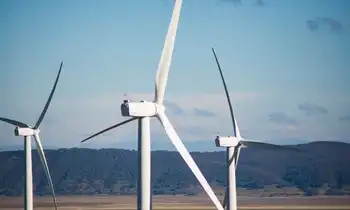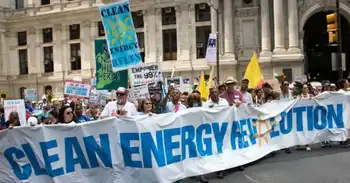Get smart with your energy
By Toronto Sun
Substation Relay Protection Training
Our customized live online or in‑person group training can be delivered to your staff at your location.

- Live Online
- 12 hours Instructor-led
- Group Training Available
Love 'em, or hate 'em - by 2010, they'll be in every home and business in this province, so Big Brother Dalton McGuinty can watch how you're consuming electricity.
It's all in the name of a honourable plight: Conserving energy and keeping the lights on. And if you're vocal that smart meters are dumb, watch out for green advocates who'll label you a greedy energy guzzler who doesn't give a damn about the environment.
Yet, some critics warn smart meters will hurt the most vulnerable, like low-income seniors, people with health problems or families living in homes with electric heat - while studies, like the one conducted by Hydro Quebec in the 1980s, show they do little to change consumption habits in homes.
Then there's this: You can't unplug some of biggest energy guzzlers during the peak hours to save - like refrigerators or freezers. Even new energy-efficient furnaces rely on electricity 24-7 to cycle on and off.
I asked an energy expert to crunch some numbers for me, and here's what he found: If you use electricity wisely, your bill shouldn't be much higher than what you're currently paying under Ontario's regulated plan. In fact, you could come out even, or paying less, if you use energy wisely.
Under Ontario's regulated rates, households throughout the province this summer are paying 5 cents per kilowatt hour (kwh) for the first 600 kilowatts, then 5.9 cents for usage over that.
With Smart Meters (also known as time-of-use meters), we'll be paying 7.3 cents/kwh during mid-peak, which during the summer is 7 a.m. to 11 a.m. and 5 p.m. to 10 p.m., and 9.3 cents/kwh from 11 a.m. to 5 p.m. Off-peak cost is 2.8 cents/kwh from 10 p.m. To 7 a.m. - and the good news is you pay the cheap off-peak rate all weekend and on holidays. That's when I'd do my laundry, vacuuming, etc.
The Ontario Energy Board (OEB) offers advice on how to conserve with smart meters on its website at oeb.gov.on.ca. Some suggestions include using timers available on newer dishwashers, washing machines and dryers to set these appliances to turn on when energy is cheapest. Other suggestions we've heard many times, like programming thermostats to turn furnaces and air conditioning down when you're not at home, disconnect adapters and computers when not in use and install compact fluorescent lighting.
But you won't be able to save on this:
These babies cost money to install and local utilities are busily discussing how to handle the extra costs, which will likely be passed on to the lowly consumer.
For example, Brant County Power estimates capital costs to implement smart meters will be about $2 million, so its hydro customers will be paying "a small installation charge" plus a monthly fee for their use.
At a Kawarthas Lake Council meeting this month, councillors were warned the cost to install a meter will range from between $110 and $560, with maintenance costs between $5 and $2. One councillor estimated some hydro bills could jump by 40%, meaning an additional $475 a year.
Fact is the cost of the commodity is just one price on a hydro bill. There are delivery charges, regulatory charges and, of course, the hated debt retirement tax Ontarians are paying to retire the $20.9 billion in stranded debt from Ontario Hydro after it was busted up into five different pieces, with valuable assets paid for by taxpayers sold off under the Tories' botched deregulation scheme.
As reported here, Hydro One customers are already facing higher distribution rates, after the company swallowed up 88 smaller utilities in 2001 and '02 and applied to OEB to harmonize rural rates.
That means families in rural areas could see delivery charges jump by as much as 35% over the next four years, depending on where they live.
For example, the folks in Avonmore will see their delivery rates rise by 34.9% in four years; Owen Sound, 30%; Rockland Town, 33.5%; and Wardsville, 29.6%.
Small businesses, who already complain that skyrocketing hydro bills are hurting their bottom line, are bracing for more price shocks.
"Three out of every five of our members complain their businesses can't shift their electricity usage to take advantage of cheaper pricing," said Judith Andrew, Ontario vice-president of the Canadian Federation of Independent Business (CFIB).
She uses the example of an owner of a pizzeria. "The owner won't be able to wake up at 2 a.m. and cook pizzas for their customers," said Andrew.
CFIB estimates some hydro bills for Ontario's small businesses, who will pay the same rate as residences if electricity usage is less than 250,000 kwh a year, will jump by 50% with smart meters.
Bottom line is we are headed down a dark road since Enron vultures circled to convince our politicians that public power was evil and it was time to follow the lead of many U.S. states and open up Ontario's electricity market to competition through deregulation.
Deregulation may work in some sectors, but electricity is different. Unlike other commodities, such as gasoline, electricity cannot be stored to be consumed when needed. It must be supplied at a moment's notice, and if it's not consumed at that moment, it's gone forever.
The only leader who gets it is retiring NDP leader Howard Hampton, whose book Public Power should be a must-read for every politician.
And while we watch Ontario's economy get slaughtered by a high Canadian dollar, an economic meltdown in the U.S. and skyrocketing energy costs, Premier McGuinty tied the future of electricity generation to natural gas, whose prices have zoomed with rising world crude prices. "Using natural gas is like burning gold," commented an industry expert.
So is it any wonder that while we struggle to pay our bills, our blood boils over when we hear this? Hydro One CEO Tom Parkinson walked away with a $5-million parachute, on top of a $1.7-million pay; Ontario Power Generation CEO gets paid $1.5 million; the Independent Electricity System Operator $1.2 million; there's been a 24% spike in civil servant pay over $100,000, most in hydro; and Toronto Hydro sought a 6.3% hike in electricity prices to make up for lost revenue because we're all conserving.
I say it's time to install a smart meter at Queen's Park to track how our hard-earned tax dollars are being consumed.
Here's what you'll pay for electricity with a Smart Meter:
OFF-PEAK
2.8 cents a kilowatt hour
10 p.m. to 7 a.m. weekdays
All hours on weekends and holidays
MID-PEAK
7.3 cents a kilowatt hour
7 a.m. to 11 a.m., 5 p.m. to 10 p.m., summer weekdays
11 a.m. to 5 p.m., 8 p.m. to 10 p.m., winter weekdays
ON-PEAK
9.3 cents a kilowatt hour
11 a.m. to 5 p.m., summer weekdays
7 a.m. to 11 a.m., 5 p.m. to 8 p.m., winter weekdays









